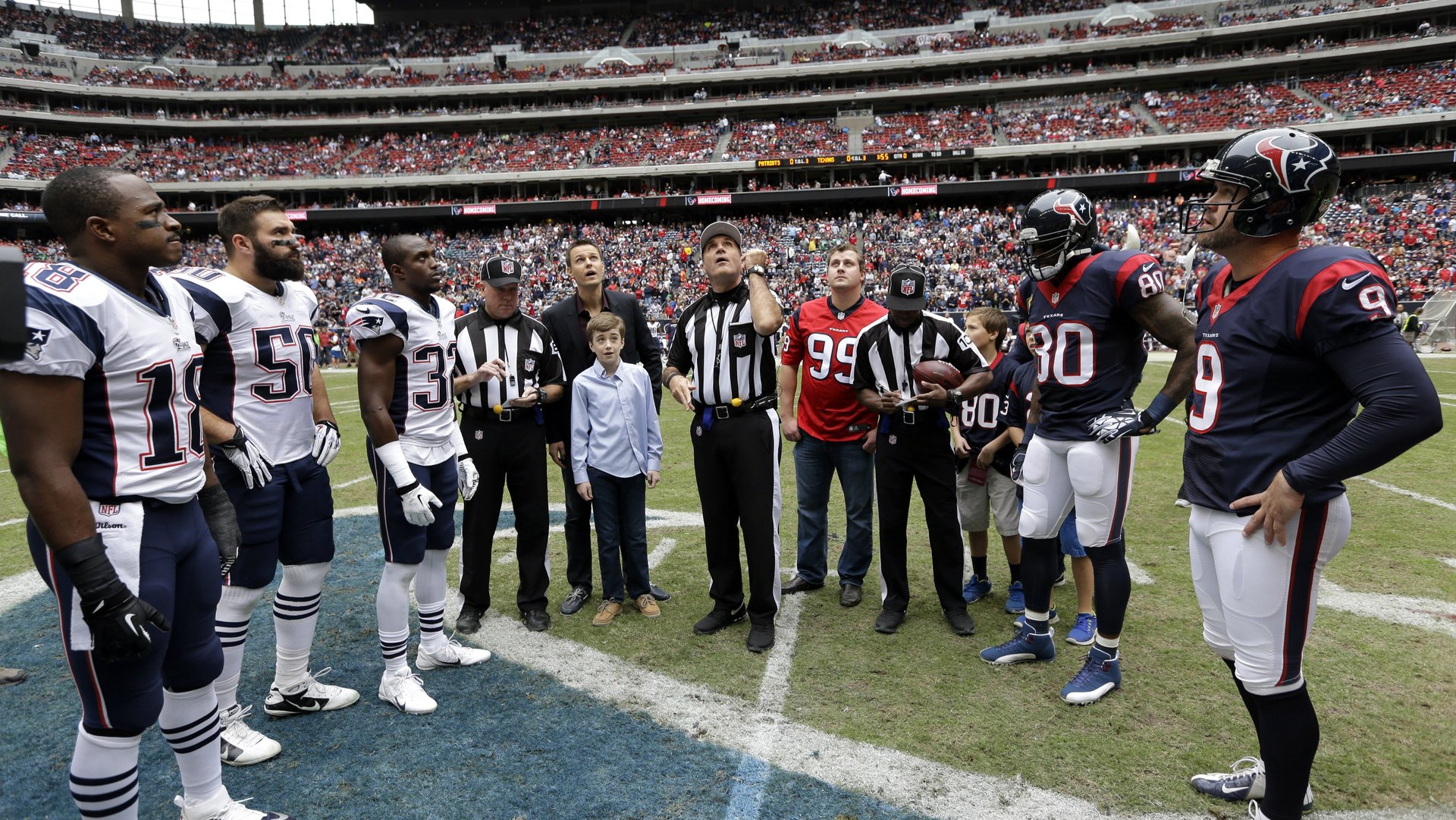What betting on a coin toss reveals about how sports wagers work
SCENE: A SPORTS BAR IN A SMALL AMERICAN TOWNZoom in on three friends at a table with beers, in the glow of multiple TVs showing football highlights.Fan 1 (in New England Patriots gear): “The Super Bowl coin toss is definitely going to land on heads this year. It has been tails for four years in a row. Heads is due.”Fan 2 (in Philadelphia Eagles garb): “No way! That just means the toss is totally biased. Tails is the bet.”Fan 3 (wearing a Lord of the Rings t-shirt): ”You guys are ridiculous. The chances are always 50-50. Every coin flip is an independent event. You need to read up on the gambler’s fallacy. Plus, the sportsbook will only give you 95 cents if you win a dollar bet, which is nuts! It’s the ultimate suckers bet.”Fan 1: “I’ll bet you five bucks it’s heads.”


SCENE: A SPORTS BAR IN A SMALL AMERICAN TOWN
To the delight bookies and casino owners across the world, conversations like this will take place across the world this week, as gamblers prepare for the biggest day in their calendar. There are nearly 1,000 prop bets—bets made about whether a certain thing will happen during a game—that can be made on the Super Bowl. Betting on the result of the coin toss, as silly as it is, is among the most popular of these props. Almost $5 billion will be wagered on the game, and millions will be bet on heads versus tails, despite the lousy odds on offer.
The coin toss is a useful way to think about how sports wagering works, if you aren’t already familiar.
Gamblers often think of themselves as betting against the bookie, but in reality that is not really the case. Sportsbooks are agencies that charge a fee for allowing people to bet against each other. Their goal is to set the odds so that about half the money wagered on every bet is made on one side and half on the other. In this way, the sportsbook is guaranteed to make money, because they take a fee of around 5%. Think back to the coin toss—the odds are always and obviously 50-50 (or “even money”), which more or less guarantees an equal amount of money placed on either side of the bet. A one-dollar bet should pay out one dollar for a win—it doesn’t, which reveals the cut that the sportsbook takes, meaning that they win either way.
Sportsbooks don’t always succeed in getting half of the action on both sides, so they need to adjust the odds until they do. For example, initially the Philadelphia Eagles were 5.5-point underdogs to the New England Patriots in the 2018 Super Bowl. This means that if you bet on the Eagles, you would be a winner if they won the game or lost it by five or fewer points. Turns out that number was too high. Far more than half the money wagered was put on the Eagles at those odds, so to get the bets closer to even on each side, sportsbooks have mostly moved the line to 4.5 points, making bets on the Patriots more enticing and balancing things out.
In more exotic prop bets, bookies offer bets on the color of the liquid dumped on the winning coach: they figure that yellow or green is much more likely than purple, according to their odds. You can also bet on how many times Donald Trump will tweet on the day of the Super Bowl, with the market-clearing line set at five.
According to the sportsbook at the Caesars Palace casino in Las Vegas, more people have been betting on heads this year, but larger bets are coming in on tails, and so the money is even. The sportsbooks, the only people sure to make money, are laughing all the way to the bank.